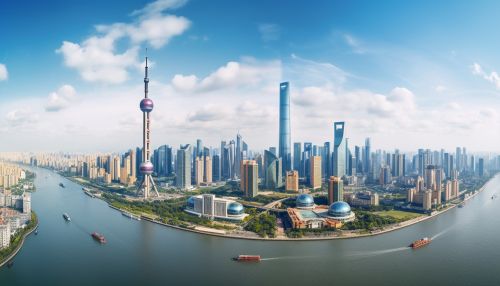Economy of China
Overview
The economy of the People's Republic of China is a mixed socialist market economy which is composed of state-owned enterprises (SOEs) and domestic and foreign private businesses and investments. The economy of China is the world's largest economy by purchasing power parity, and the second largest by nominal GDP. China is also the world's largest exporter and importer of goods.


History
China's economic system was largely based on communism before 1978, a period known as the Mao era. However, following Mao's death and the end of the Cultural Revolution, the Chinese government instituted significant economic reforms in the late 1970s with the goal of shifting from a centrally planned economy to a mixed economy. This period, known as the "Reform and Opening Up" policy, marked the beginning of China's rapid economic growth.
Economic Sectors
Primary Sector
The primary sector of the economy includes agriculture, fishing, mining, and extraction of natural resources. China is the world's largest producer of rice and is among the principal sources of wheat, corn, tobacco, soybeans, and cotton.
Secondary Sector
The secondary sector includes industries that produce a finished, usable product. This sector has grown rapidly in China due to the country's cost advantages in manufacturing and the large domestic market.
Tertiary Sector
The tertiary sector is also known as the service sector. This sector has also seen rapid growth in recent years, with an increasing number of Chinese citizens moving into urban areas and demanding more services.
Economic Policies and Reforms
China's economic policies are defined by the Chinese Communist Party through the plenary sessions of the Central Committee and national congresses. The government has focused on maintaining a steady pace of economic growth, preventing financial risks, and improving living standards.
International Trade
China is a major player in international trade. It is the world's largest exporter, with the United States, Hong Kong, Japan, and South Korea being its top export destinations. It is also the world's second-largest importer, with its top import sources being the European Union, ASEAN, South Korea, Japan, and the United States.
Challenges and Issues
Despite its rapid economic growth, China faces several economic challenges, including an aging population, income inequality, and environmental issues. Additionally, the country's economic growth model, which is heavily reliant on investment and exports, has been criticized for being unsustainable in the long term.
